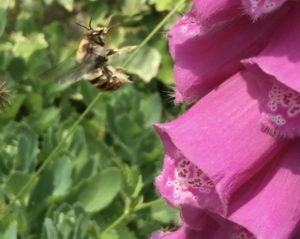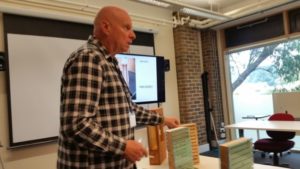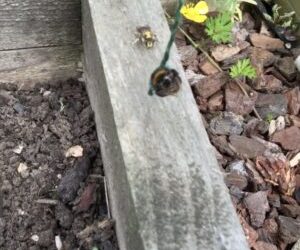What, where and how to feed Wrens over the winter-video
Where do Wrens find their winter food? It helps to know what they eat, how and where they find it! The Wren, (Troglodytes, troglodytes), when it can it feeds upon invertebrate prey such as insects, bugs and spiders. I have also seen them eat very small slugs. In the...
Bombus terrestris queen bumblebee foraging on Mahonia japonica 30 Nov 17
Winter foraging queen bumblebee. B. terrestris After seeing B. terrestris workers foraging on Mahonia japonica in Liverpool in Jan 2016, I have kept a lookout ever since for winter activities in the North West. Whilst out collecting natural materials for a Christmas...
Join the Soil Association and win a Nurturing Nature Solitary bee nest box
Win a Nurturing Nature Solitary Bee Observation Nestbox.. but hurry! Don’t miss out on your chance to win this amazing bee nesting box – join today and enter the prize draw to win one of Nurturing Nature’s award-winning bee nesting boxes. Nurturing Nature Ltd was...
Red Admiral butterflies and ivy
Red Admiral butterfly and ivy Planting ivy (Hedera helix) against a fence, shed or outbuilding and allowed to flower, can be useful not only for Red Admirals topping up before winter but also a host of other wildlife that uses it for food, shelter and nesting. Many...
25 flowers for solitary bees by Nurturing Nature film
25 flowers used by solitary bees for nectar and pollen Each one of the flowers is actually used by and in most cases, the bee is filmed actually foraging or has just finished foraging on it. All flowers were filmed in my garden, except for the parsnips growing on an...
Nurturing Nature gives staff at Kew Gardens a solitary bee pests presentation
Solitary bee pests presentation at Kew Gardens I had the privilege of giving a presentation to staff members, which included academics, researchers and students, at Kew Botanical Gardens. It was entitled "Is your bee hotel a nursery for pests and disease?" and loosely...
Sapyga quinquepunctata foraging on Yarrow and resting
Sapyga quinquepunctata? sleeping inside Nurturing Nature Nestbox BWARS states that Sapyga quinquepunctata is a cleptoparasite of solitary bees, including the Red mason bee (Osmia bicornis), O. leaiana, O. caerulescens (Blue Mason bee) and O. aurulenta. Sapyga...
Male Wool carder bee attacks bumblebee and solitary bee
Would the male Wool carder bee attack the bumblebee on a string? After observing the frantic antics of a male wool carder bee and filming them. I saw it chase away butterflies, hoverflies, attack a male B. pratorum, a male solitary bee and closely inspect a wood chip...
Where have all the insects gone? An ecological Armageddon?
No more insect splattered windscreens or grills "Where have all the flowers gone?" was a song I remember by Peter, Paul and Mary back in the 1960's. One line states, " Oh when will they ever learn?"After reading this article it reminded me of the song. "Where have all...
Yellow face solitary bees resting and foraging video
Yellow Face bees (Hylaeus sp.) in my wildlife garden I must admit these bees are tiny and therefore very easily overlooked. When I got my 'eye-in', I had to use Steven Falk's excellent book and his website to try to find what they were, so I may be wrong! Reading this...









